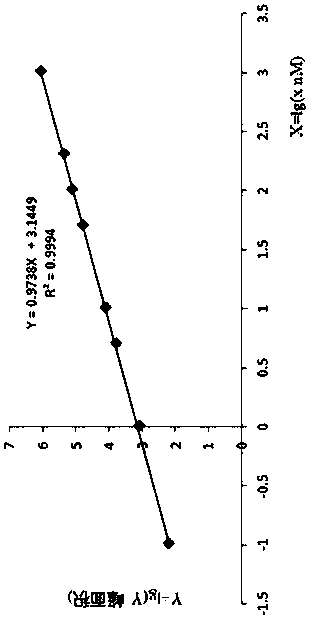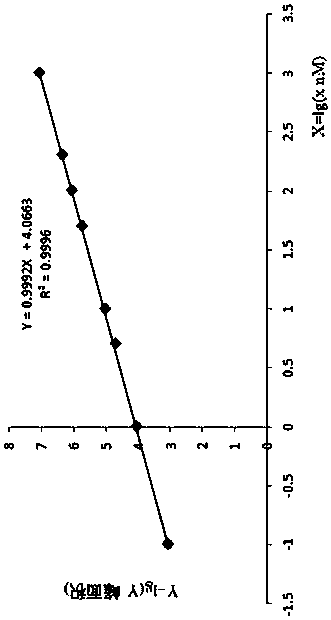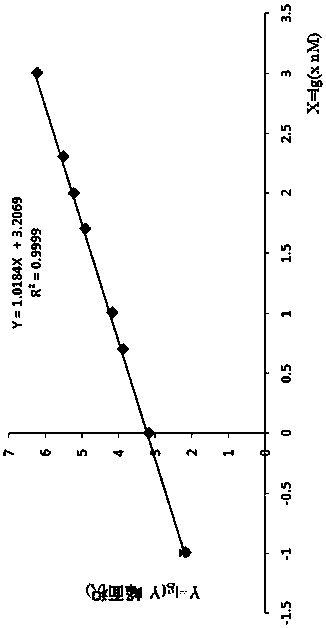Method for detecting fish parvalbumin through liquid chromatography tandem mass spectrometry
A parvalbumin and liquid chromatography technology, applied in the field of food allergen detection, can solve the problems affecting the accuracy of ELISA method, inability to specifically bind antibodies, poor repeatability and specificity, etc., and achieves strong representation and linear range. Wide and easy enzymatic hydrolysis effect
- Summary
- Abstract
- Description
- Claims
- Application Information
AI Technical Summary
Problems solved by technology
Method used
Image
Examples
Embodiment Construction
[0039] The terms used in the present invention, unless otherwise specified, generally have the meanings commonly understood by those skilled in the art.
[0040] The present invention will be described in further detail below in conjunction with specific examples and with reference to data. It should be understood that these examples are only for illustration of the present invention, but not to limit the scope of the present invention in any way.
[0041] In the following examples, various procedures and methods not described in detail are conventional methods well known in the art. The sources and trade names of the reagents used, as well as those whose components must be listed, are indicated when they appear for the first time, and the same reagents used thereafter are the same as those indicated for the first time unless otherwise specified.
[0042] The solution percentage concentration involved in the present invention is the mass percentage concentration unless otherw...
PUM
| Property | Measurement | Unit |
|---|---|---|
| molecular weight | aaaaa | aaaaa |
Abstract
Description
Claims
Application Information
 Login to View More
Login to View More - R&D
- Intellectual Property
- Life Sciences
- Materials
- Tech Scout
- Unparalleled Data Quality
- Higher Quality Content
- 60% Fewer Hallucinations
Browse by: Latest US Patents, China's latest patents, Technical Efficacy Thesaurus, Application Domain, Technology Topic, Popular Technical Reports.
© 2025 PatSnap. All rights reserved.Legal|Privacy policy|Modern Slavery Act Transparency Statement|Sitemap|About US| Contact US: help@patsnap.com



